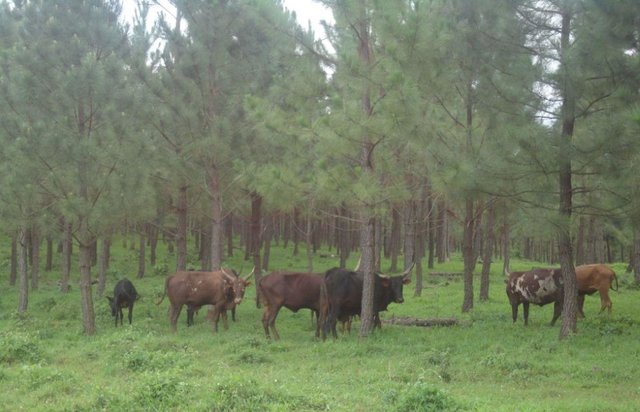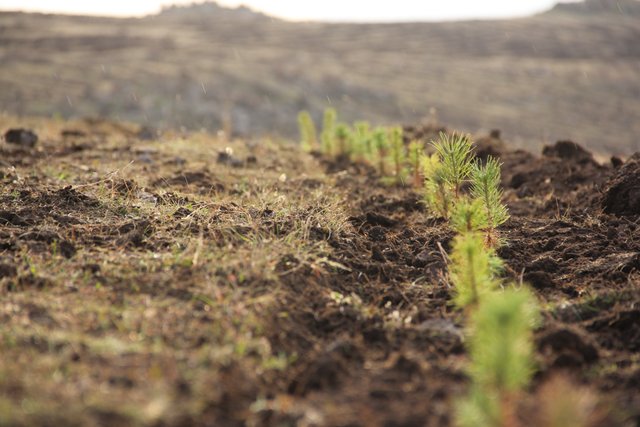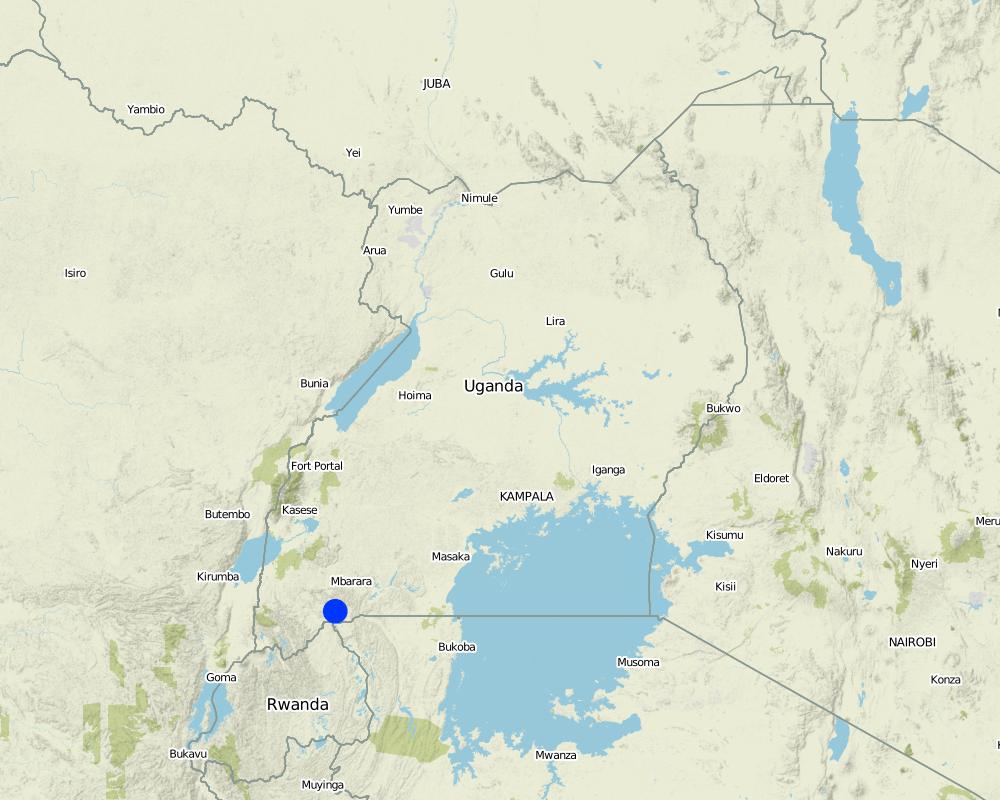Afforestation/Tree planting [Uganda]
- Creation:
- Update:
- Compiler: Wilson Bamwerinde
- Editor: –
- Reviewer: Fabian Ottiger
Okuhinga emiti.
approaches_2587 - Uganda
View sections
Expand all Collapse all1. General information
1.2 Contact details of resource persons and institutions involved in the assessment and documentation of the Approach
SLM specialist:
Mazimakwo Kukundakwe
Kabale District
Uganda
SLM specialist:
Mushabe Joshua
Ntungamo District
Uganda
SLM specialist:
Tugaine Richard
Ntungamo District
Uganda
SLM specialist:
Matsiko Polly
0782900819
Nshenyi, Kitwe Town Council
Uganda
Name of project which facilitated the documentation/ evaluation of the Approach (if relevant)
The Transboundary Agro-ecosystem Management Project for the Kagera River Basin (GEF-FAO / Kagera TAMP )Name of the institution(s) which facilitated the documentation/ evaluation of the Approach (if relevant)
Ntungamo District - UgandaName of the institution(s) which facilitated the documentation/ evaluation of the Approach (if relevant)
Kabale District Local Government (Kabale District Local Government) - UgandaName of the institution(s) which facilitated the documentation/ evaluation of the Approach (if relevant)
Kitwe Town Council - Uganda1.3 Conditions regarding the use of data documented through WOCAT
When were the data compiled (in the field)?
19/04/2013
The compiler and key resource person(s) accept the conditions regarding the use of data documented through WOCAT:
Ja
1.4 Reference(s) to Questionnaire(s) on SLM Technologies

Afforestation /Tree planting [Uganda]
Pine tree forests have been strategically planted on previously bare ridges and slopes to mitigate mass soil movement.
- Compiler: Wilson Bamwerinde

High-altitude afforestation for erosion control [Armenia]
Afforestation is a key technologies to protect soil against erosion and provide a wide range of ecosystem services. In this case, afforestation at high altitudes, which is particularly challenging, with the primary purpose of erosion control were planted in small patches with different methods. They form the basis for future …
- Compiler: Hanns Kirchmeir
2. Description of the SLM Approach
2.1 Short description of the Approach
Tree planting carried out by individual land users on hilly slopes to improve soil cover ,reduce wind strength , provide wood fuel & household income.
2.2 Detailed description of the Approach
Detailed description of the Approach:
Aims / objectives: -To conserve the degraded hill by planting trees and reduce soil erosion.
-To reduce wind strength.
-To increase sources of fuel wood.
-To diversify sources of future household income.
Methods: -Mobilization of farmer field members to participate in tree planting , to increase tree cover in the area.
-Facilitation of planning meetings for farmer field school members in identifying tree planting needs.
-Purchase and raising of tree seedlings and tree nursery beds for tree seedlings.
-Distribution of tree seedlings to willing farmer school members for planting.
-Provision of training in tree planting technologies prior to distribution.
-Tree planting and management.
Stages of implementation: -Planning of tree planting needs.
-Purchase of tree seedlings and raising of indigenous tree seedlings.
-identification of planting sites.
-capacity building in tree planting technologies.
-making of holes for planting tree seedlings.
-Making of holes for tree planting seedlings.
-Planting of tree seedlings.
Role of stakeholders: -Mobilization of farmer field school members by service providers.
-Training the beneficiary members in tree planting by service providers/facilitators.
-Provision of funds for purchase of tree seedlings by FAO under the Kagera TAMP project.
Other important information: The land users and the farmer field school members had seen tree planting activities in neighbouring areas but they had thought that such activities could only be done by government.
But through mobilization farmers have realized the importance and possibility of farmers benefiting from tree planting.
2.5 Country/ region/ locations where the Approach has been applied
Country:
Uganda
Region/ State/ Province:
Uganda
Further specification of location:
Ntungamo
Map
×2.6 Dates of initiation and termination of the Approach
Indicate year of initiation:
2011
Year of termination (if Approach is no longer applied):
2015
2.7 Type of Approach
- project/ programme based
2.8 Main aims/ objectives of the Approach
The Approach focused mainly on SLM with other activities (Reduction of wind strength ,provision of wood fuel and contribute to household income. )
-To conserve degraded hill slopes against erosion due to overstocking.
-To reduce wind strength in the area by increasing tree cover in the area.
-To increase source of wood fuel in the area.
-To diversify the future source of household incomes in the area among the communities.
The SLM Approach addressed the following problems: -To reduce soil erosion on degraded hill slopes.
-To reduce the strength of which wind affect the area in rainy seasons.
-To increase access to wood fuel sources.
-To diversify future household income.
-To get cheap timber for staking bananas.
2.9 Conditions enabling or hindering implementation of the Technology/ Technologies applied under the Approach
social/ cultural/ religious norms and values
- hindering
Lack of initiative to undertake tree planting.
Treatment through the SLM Approach: mobilization and sensitization into farmer field school approach.
availability/ access to financial resources and services
- hindering
Inadequate funds for tree seedling purchase.
Treatment through the SLM Approach: Seek assistance from FAO.
legal framework (land tenure, land and water use rights)
- enabling
The existing land ownership, land use rights / water rights greatly helped the approach implementation: Land user owns the land and thus did not face any resistance.
knowledge about SLM, access to technical support
- hindering
Inadequate capacity on tree planting technologies and values in tree planting.
Treatment through the SLM Approach: Mobilization and training /sensitization in tree planting benefits.
3. Participation and roles of stakeholders involved
3.1 Stakeholders involved in the Approach and their roles
- local land users/ local communities
Farmer field school members , Facilitators
- SLM specialists/ agricultural advisers
Farmer field trainers
- international organization
- Facilitators
3.2 Involvement of local land users/ local communities in the different phases of the Approach
| Involvement of local land users/ local communities | Specify who was involved and describe activities | |
|---|---|---|
| initiation/ motivation | external support | The land users were mobilized by national project coordinator. |
| planning | external support | The land users were mobilized and facilitated to identify their problems related to environmental degradation & priorities were made. |
| implementation | self-mobilization | Land users were responsible for tree planting. |
| monitoring/ evaluation | external support | Project officials are to undertake M&E. |
| Research | none |
3.4 Decision-making on the selection of SLM Technology/ Technologies
Specify who decided on the selection of the Technology/ Technologies to be implemented:
- mainly land users, supported by SLM specialists
Explain:
After mobilization and sensitization of the land users in farmer field schools ,the land users decided to under take tree planting.
Decisions on the method of implementing the SLM Technology were made by mainly by land users supported by SLM specialists. Land users made decision on the technology alone.
4. Technical support, capacity building, and knowledge management
4.1 Capacity building/ training
Was training provided to land users/ other stakeholders?
Ja
Specify who was trained:
- land users
Form of training:
- farmer-to-farmer
- demonstration areas
4.2 Advisory service
Do land users have access to an advisory service?
Ja
Specify whether advisory service is provided:
- at permanent centres
Describe/ comments:
Name of method used for advisory service: Training and awareness.; Key elements: mobilization, identification of problems related to land degradation. , Ranking of severity of land degradation types. SLM approaches were then selected by land users after analysis & synthesis of the problems.
Advisory service is inadequate to ensure the continuation of land conservation activities; Land use needs continuous follow-up and little support provided in terms of financial & advisory.
4.3 Institution strengthening (organizational development)
Have institutions been established or strengthened through the Approach?
- no
4.4 Monitoring and evaluation
Is monitoring and evaluation part of the Approach?
Ja
Comments:
technical aspects were regular monitored by land users through observations; indicators: Progress of tree growth.
There were few changes in the Approach as a result of monitoring and evaluation
There were no changes in the Technology as a result of monitoring and evaluation
4.5 Research
Was research part of the Approach?
Ja
- Baseline survey on the needs assessment.
Give further details and indicate who did the research:
Trainers of farmer field schools mobilized farmer field school land users ,who identified their problems and how they can be solved.
Research was carried out on-farm
5. Financing and external material support
5.1 Annual budget for the SLM component of the Approach
If precise annual budget is not known, indicate range:
- < 2,000
Comments (e.g. main sources of funding/ major donors):
Approach costs were met by the following donors: international (FAO): 70.0%; local community / land user(s) (mobilization,facilitation of meals during trainings.etc): 30.0%
5.2 Financial/ material support provided to land users
Did land users receive financial/ material support for implementing the Technology/ Technologies?
Ja
5.3 Subsidies for specific inputs (including labour)
- equipment
| Specify which inputs were subsidised | To which extent | Specify subsidies |
|---|---|---|
| tools | partly financed | |
- agricultural
| Specify which inputs were subsidised | To which extent | Specify subsidies |
|---|---|---|
| fertilizers | partly financed | |
If labour by land users was a substantial input, was it:
- food-for-work
Comments:
Food for work, paid in cash and rewarded with other material support
Shs 5000 each person per day.
most funds provided by FAO and small proportion by land users.
5.4 Credit
Was credit provided under the Approach for SLM activities?
Nee
6. Impact analysis and concluding statements
6.1 Impacts of the Approach
Did the Approach help land users to implement and maintain SLM Technologies?
- No
- Yes, little
- Yes, moderately
- Yes, greatly
-Retardation of soil erosion. -Provision of soil cover.
Did the Approach empower socially and economically disadvantaged groups?
- No
- Yes, little
- Yes, moderately
- Yes, greatly
No disadvantaged group involved.
Did other land users / projects adopt the Approach?
- No
- Yes, little
- Yes, moderately
- Yes, greatly
2 to 7 land users adopted the approach towards tree planting.
Did the Approach lead to improved livelihoods / human well-being?
- No
- Yes, little
- Yes, moderately
- Yes, greatly
Did the Approach help to alleviate poverty?
- No
- Yes, little
- Yes, moderately
- Yes, greatly
The trees have not yet matured for harvesting.
6.2 Main motivation of land users to implement SLM
- increased production
- increased profit(ability), improved cost-benefit-ratio
generate income.
- rules and regulations (fines)/ enforcement
generate income.
- environmental consciousness
conserve the environment
- well-being and livelihoods improvement
6.3 Sustainability of Approach activities
Can the land users sustain what has been implemented through the Approach (without external support)?
- yes
6.4 Strengths/ advantages of the Approach
| Strengths/ advantages/ opportunities in the land user’s view |
|---|
| 1. Green environment (How to sustain/ enhance this strength: Plant more trees. ) |
| 2. Reduce global warming (How to sustain/ enhance this strength: Plant more trees for carbon absorption.) |
| 3. Cool environment (How to sustain/ enhance this strength: Plant more trees on the bare hills.) |
| 4. Increase productivity. (How to sustain/ enhance this strength: Better monitoring and evaluation. ) |
| Strengths/ advantages/ opportunities in the compiler’s or other key resource person’s view |
|---|
| 1. Control of soil erosion. (How to sustain/ enhance this strength: Plant more trees. ) |
| 2.Improved soil cover. (How to sustain/ enhance this strength: Plant more trees. ) |
| 3. Reduction of wind speed. (How to sustain/ enhance this strength: Plant more trees in wind prone areas.) |
| 4. Increase wood fuel in future. |
6.5 Weaknesses/ disadvantages of the Approach and ways of overcoming them
| Weaknesses/ disadvantages/ risks in the land user’s view | How can they be overcome? |
|---|---|
| 1. It is costly. | Subsidize land users. |
| 2. Long term returns. | Plant some quick maturing trees. |
| Weaknesses/ disadvantages/ risks in the compiler’s or other key resource person’s view | How can they be overcome? |
|---|---|
| 1. It is costly to plant trees. | Provide subsides to land users who are practicing the technology. |
7. References and links
7.1 Methods/ sources of information
- field visits, field surveys
- interviews with land users
7.2 References to available publications
Title, author, year, ISBN:
1. Managemenrt plan for sawlog production ,Project proposal by Tibesigwa Mukasa,2006.
Links and modules
Expand all Collapse allLinks

Afforestation /Tree planting [Uganda]
Pine tree forests have been strategically planted on previously bare ridges and slopes to mitigate mass soil movement.
- Compiler: Wilson Bamwerinde

High-altitude afforestation for erosion control [Armenia]
Afforestation is a key technologies to protect soil against erosion and provide a wide range of ecosystem services. In this case, afforestation at high altitudes, which is particularly challenging, with the primary purpose of erosion control were planted in small patches with different methods. They form the basis for future …
- Compiler: Hanns Kirchmeir
Modules
No modules


